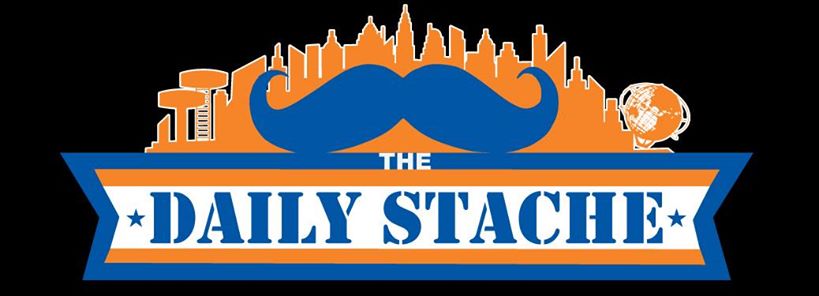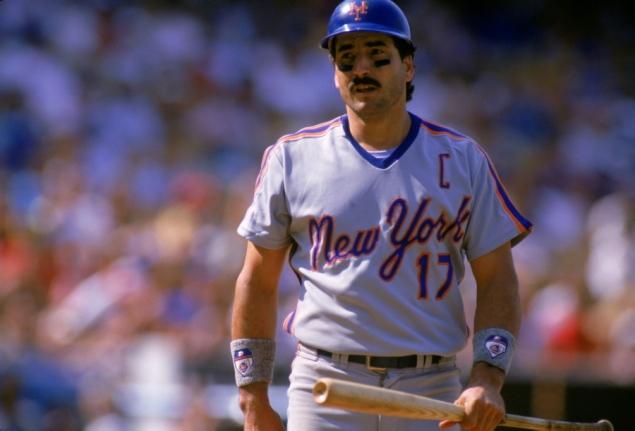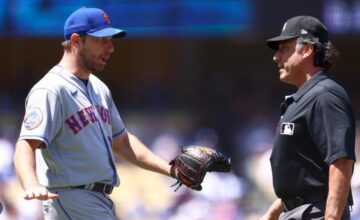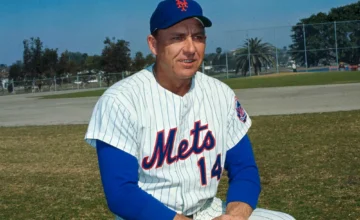As of 2014, 50 different New York Mets have been selected for All-Star status. Each position has had representation in blue and orange. Here now is a starting lineup of the players who were most worthy at the All-Star break along with the individual year in which they were most qualified.
C: Mike Piazza, 2000
In terms of position players, Piazza is tied with David Wright and Darryl Strawberry for the most All-Star nods by a Met with seven. At the time the game was ready to be played in Atlanta in 2000, Piazza was on pace for a career year – 24 home runs, 72 runs batted in and a .348 average – as the Mets were en route to a second straight postseason appearance (and eventual NL pennant).
But Piazza, himself, wasn’t able to participate. A nasty hit-by-pitch from Roger Clemens just a few days prior kept him out of action.
1B: Keith Hernandez, 1984
The best trade in franchise history paid immediate dividends. Hernandez not only brought a new attitude to a sagging team when he came over from St. Louis in June 1983, but he also brought his consistent bat and superb glove.
Although Steve Garvey got the start in the ’84 All-Star game at Candlestick Park, there were no arguments for the San Francisco native being on the roster. Hernandez’ batting average was a .312, his OPS at .839, and his RBI total at 45. More importantly, he was still the best defensive first baseman in the game – continuing a streak of Gold Gloves that would eventually reach 11.
2B: Edgardo Alfonzo, 2000
While Piazza wasn’t present for the 2000 edition of the Midsummer Classic, Alfonzo was. And although he went hitless in his two at-bats, his consistency during the regular season was as good as anyone else on the Mets.
A red-hot performance in May resulted in 13 homers, 58 RBI and a .318 average at the conclusion of the first half. His 97 hits (24 of which were doubles) and 54 walks were a good reason why his OPS was at .955.
SS: Jose Reyes, 2011
The current Toronto Blue Jay is, in fact, the only Met shortstop besides Bud Harrelson to make it to the All-Star competition. And his best year in New York uniform happened to be his last.
Reyes started the 2011 campaign more consistent at the plate than in any of his previous three All-Star selections. His triples (15) and stolen bases (30) remained high, but two important categories really improved. He accumulated 124 hits over the first 80 games and hit .354 – earning a start in Arizona.
Despite injuries that would hamper the latter stages of the season, Reyes still ended the year as the NL batting champion with a mark of .337.
3B: David Wright, 2006
He holds nearly every batting category in team history – in addition to those seven All-Star selections. And his initial trip occurred at PNC Park nearly a decade ago.
Just one night after thrilling the crowd in the Home Run Derby, Wright showed his long ball prowess in the second inning of the game against starter Kenny Rogers. This after he sent 20 over the fence up to that point in the regular season.
His home run rate would dip, but his .316 batting average and 74 runs batted in were indicative of things to come.
LF: Cleon Jones, 1969
By July of ’69, the only miracle being discussed was man landing on the moon. The Mets would eventually get their time in national spotlight, but the standout effort of Jones had already been established.
He hit .410 in April and would be a team-best .341 at the break. For a New York club that relied mainly on pitching, Jones was one of the few valuable offensive forces. His 55 runs batted in led the Mets, and his 10 home runs were second to fellow outfielder Tommy Agee.
CF: Carlos Beltran, 2006
The Mets’ 97-win effort in 2006 came thanks to a varying array of contributions. But what stood out most was the offense. Wright, Reyes, and Carlos Delgado collectively made up a potent lineup. Beltran, who had been acquired by New York via free agency prior to the 2005 season, made was also at the forefront.
As one of four Mets to earn a starting nod in that year’s All-Star contest, Beltran got there with 25 homers, 68 RBI, 174 total bases, a .606 slugging average and an OPS that neared 1.000.
RF: Darryl Strawberry, 1988
Upon being the No. 1 overall pick by the Mets in the 1980 Amateur Draft, the expectations for Strawberry were through the roof. Although his own personal demons prevented him from a more successful career, he was at his best in the year in which he made his fifth straight All-Star appearance.
Darryl slugged 21 home runs (during a season in which he finished with a career-high 39), had 16 doubles and drove in 55. His .575 slugging percentage only fell 30 points over the season’s final two-and-a-half months – enough to be the MLB leader in that category.
Starting Pitcher: Tom Seaver, 1975
Distinguishing one Seaver season over another is no easy task. But the first half of ‘75 edges out other stellar ones (1969, namely) because it featured the combination of a high win total (13), a slim earned run average (1.93) and durability (11 complete games and 163 innings pitched).
Seaver would keep up this pace for the remainder of the year, winning his third Cy Young Award. He would be chosen as a Met All-Star in nine of his ten season in Queens. Nobody in team history has more than “The Franchise.”
2015 MLB All-Star Game
A strong argument can be made that Jacob deGrom should get the start to this year’s MLB All-Star game, but regardless of the outcome, it’s going to take a lot more to knock Tom Seaver off the all time list.





3 Comments